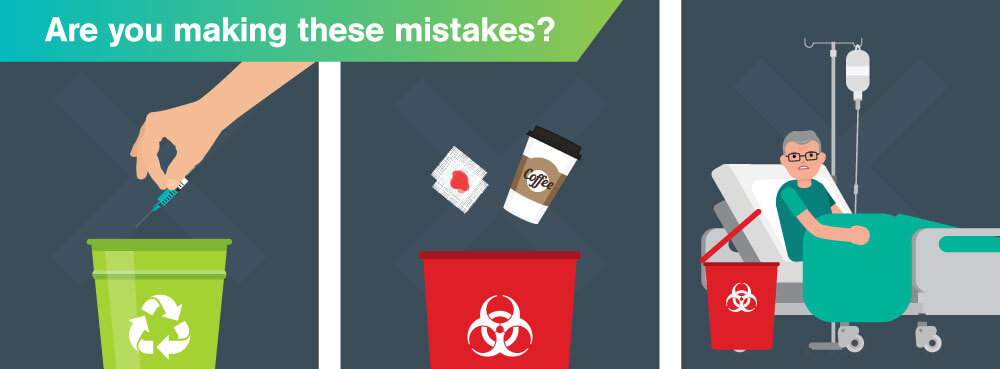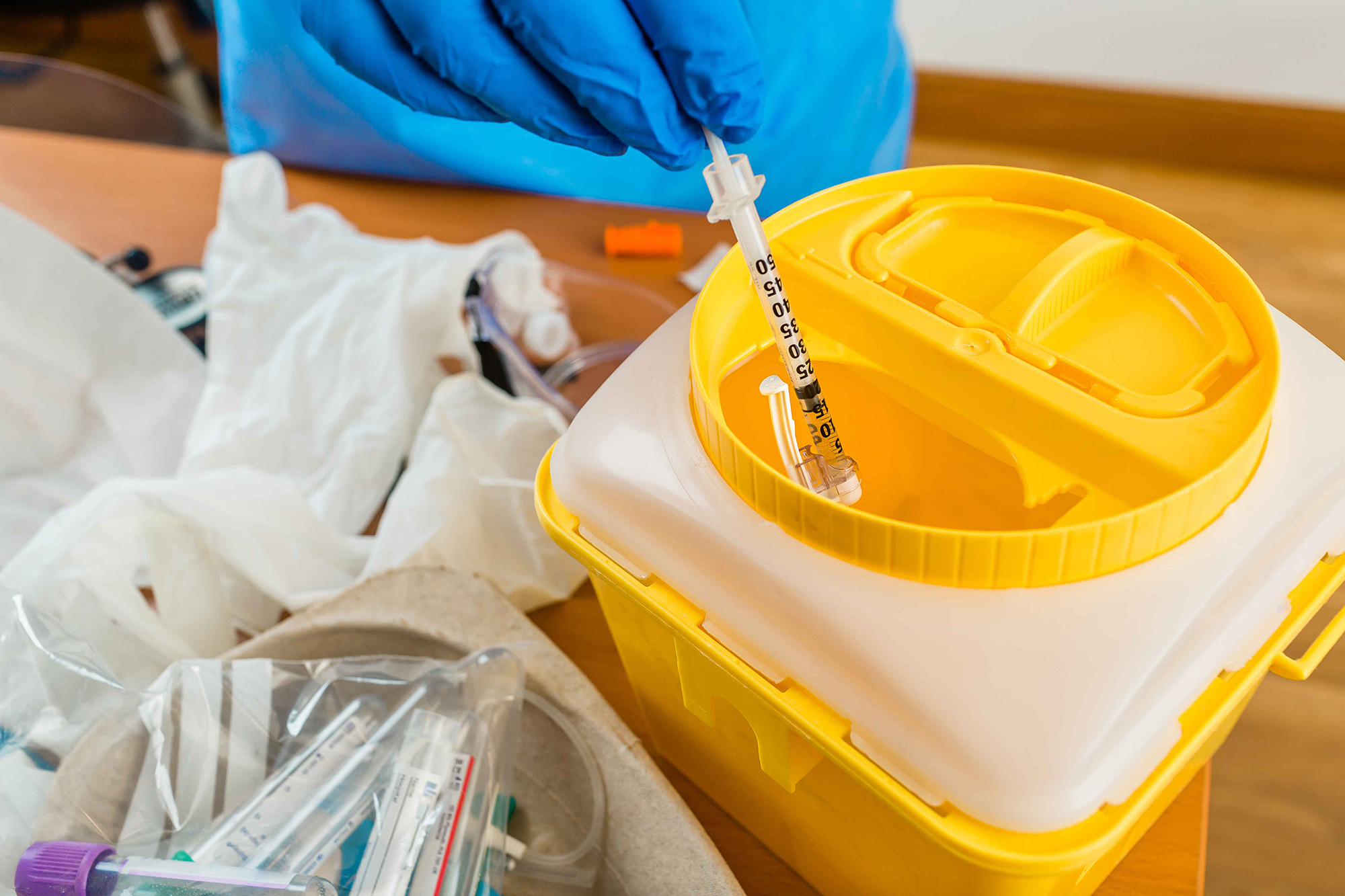Conformity and Laws for Medical Waste Disposal
Conformity and regulations for clinical waste disposal play a critical duty in making sure the safety and security and wellness of both healthcare specialists and the general public. Correct management of medical waste is important to protect against the spread of infections, protect the setting, and maintain public wellness. These regulations incorporate different facets, consisting of the classification and partition of medical waste, correct storage and dealing with procedures, as well as transportation and disposal techniques.
Importance of Conformity
The value of conformity with laws for medical garbage disposal can not be overstated. Proper disposal of medical waste is vital for ensuring the safety and wellness of health care workers, individuals, and the basic public. Clinical waste, that includes things such as made use of needles, contaminated gloves, and biomedical waste, can position severe health and wellness dangers if not taken care of and disposed of effectively.
Conformity with policies makes certain that medical waste is managed in a way that minimizes the possibility for direct exposure to damaging compounds and transmittable illness - medical waste removal service. It aids avoid the spread of infections, such as HIV, liver disease B and C, and various other bloodborne virus. Compliance likewise plays an essential role in protecting the setting by avoiding contamination of water sources, soil, and air
Failure to adhere to policies can lead to extreme repercussions for health care centers, including fines, legal activity, and damage to their online reputation. Furthermore, non-compliance may jeopardize the health and wellness and safety and security of medical care workers, people, and the community.
Conformity with regulations for clinical garbage disposal needs adherence to certain guidelines and methods. These might consist of appropriate partition, packaging, labeling, and storage of clinical waste. It also involves utilizing authorized disposal techniques, such as incineration, autoclaving, or landfilling, depending upon the sort of waste.
Regulative Agencies and Bodies
Regulative firms and bodies play an essential function in managing compliance with guidelines for clinical garbage disposal. These organizations are accountable for establishing standards, protocols, and criteria to make certain the correct and safe handling of clinical waste. They check and implement conformity to shield public health and wellness and the setting.
One of one of the most noticeable regulatory companies in the USA is the Environmental Protection Company (EPA) The EPA is liable for managing the storage, transport, therapy, and disposal of clinical waste. They develop standards for waste generators, transporters, and treatment centers to comply with, ensuring that all needed safety measures are required to protect against the spread of conditions and contamination.
Another crucial regulatory body is the Occupational Safety And Security and Wellness Administration (OSHA) OSHA establishes criteria and guidelines to secure workers from work-related risks, including those pertaining to medical waste. WasteX Medical Waste Disposal. They offer guidelines for the safe handling and disposal of clinical waste to protect staff members in healthcare centers
In addition to these government firms, individual states additionally have their own regulative bodies that manage clinical waste disposal. These agencies might have their own specific guidelines and needs that have to be followed.

Category and Segregation of Clinical Waste
To guarantee correct administration of medical waste, it is vital to categorize and segregate it according to developed standards and protocols. medical waste removal service. Classification and segregation play an important function in minimizing the threat of infection, shielding the setting, and making certain the safety of healthcare workers and the public
Medical waste is identified right into different groups based on its potential danger degree. These categories consist of contagious waste, pathological waste, sharps waste, pharmaceutical waste, chemical waste, and radioactive waste. Each category requires specific handling, storage space, transportation, and disposal methods to decrease the danger of direct exposure and contamination.
Partition of clinical waste includes separating various types of waste at the source. This procedure guarantees that waste with different danger levels is not combined, lowering the possibility for cross-contamination and making disposal procedures extra efficient. Proper partition is achieved with the use of color-coded containers and labels, which aid health care employees and WasteX Medical Waste Disposal waste administration employees manage each kind and identify of waste appropriately.
In enhancement to category and segregation, healthcare centers should likewise abide by regional, state, and government policies regarding clinical waste monitoring. These policies detail particular needs for storage, transport, treatment, and last disposal of medical waste, ensuring compliance and preserving public wellness and safety and security.
Proper Storage Space and Handling Procedures
Proper storage and handling procedures play a critical function in guaranteeing the compliant and secure monitoring of clinical waste. Medical waste, that includes items such as used syringes, infected gloves, and ended drugs, can present serious health and wellness and environmental dangers if not dealt with correctly. Consequently, it is vital for healthcare facilities and other generators of medical waste to carry out stringent storage space and dealing with methods.
To begin with, medical waste must be stored in long lasting, leak-proof containers that are particularly made for this function. These containers should be labeled with the universal biohazard icon and words "clinical waste" to plainly suggest the components. Furthermore, the containers should be maintained securely near to avoid any potential leak or splilling.
Furthermore, it is very important to segregate different types of clinical waste to prevent cross-contamination. Sharps, such as scalpels and needles, need to be kept in puncture-resistant containers to decrease the risk of injuries - WasteX Medical Waste Disposal. Chemical waste, such as solvents and anti-bacterials, ought to be saved separately from other sorts of medical waste to stop chemical responses or hazardous direct exposures

Transportation and Disposal Methods
Healthcare centers need to guarantee the risk-free transportation and proper disposal of their clinical waste to follow regulations and safeguard public wellness. Transport and disposal methods play an essential role in stopping the spread of contagious illness and reducing the environmental effect of clinical waste.
To carry medical waste, healthcare centers should make use of leak-proof and puncture-resistant containers that are classified with the biohazard sign. These containers must be safely sealed to avoid any leakage throughout transport. In addition, health care facilities must develop protocols for the transportation process, including the use of devoted automobiles and experienced workers.
As soon as the clinical waste gets to the disposal center, it goes through various techniques of treatment - WasteX Medical Waste Disposal. One typical technique is incineration, which involves burning the waste at high temperature levels to destroy microorganisms and lower the volume of waste.
It is necessary for medical care facilities to function with certified and allowed waste administration companies to ensure correct transport and disposal of clinical waste. These firms have the proficiency and resources to handle medical waste securely and in conformity with guidelines.
Verdict
To conclude, compliance with policies for clinical garbage disposal is of utmost importance to make sure public wellness and safety and security. Regulative firms and bodies play an essential duty in imposing these regulations. Proper classification and segregation of clinical waste, along with following proper storage and handling treatments, are vital to protect against contamination and the spread of conditions. Ample transportation and disposal methods have to be carried out to minimize environmental influences. Overall, adherence to conformity and policies is necessary to successfully take care of medical waste.
Clinical waste, which includes items such as used needles, contaminated handwear covers, and biomedical waste, can pose serious health and wellness threats if not dealt with and disposed of effectively.
These categories consist of transmittable waste, pathological waste, sharps waste, pharmaceutical waste, chemical waste, and radioactive waste.Segregation of clinical waste entails separating different kinds of waste at the resource. Proper partition is accomplished through the usage of color-coded labels and containers, which help medical care employees and waste administration employees determine and deal with each type of waste properly.
Chemical waste, such as anti-bacterials and solvents, should be kept separately from various other kinds of medical waste to prevent chemical reactions or dangerous direct exposures.